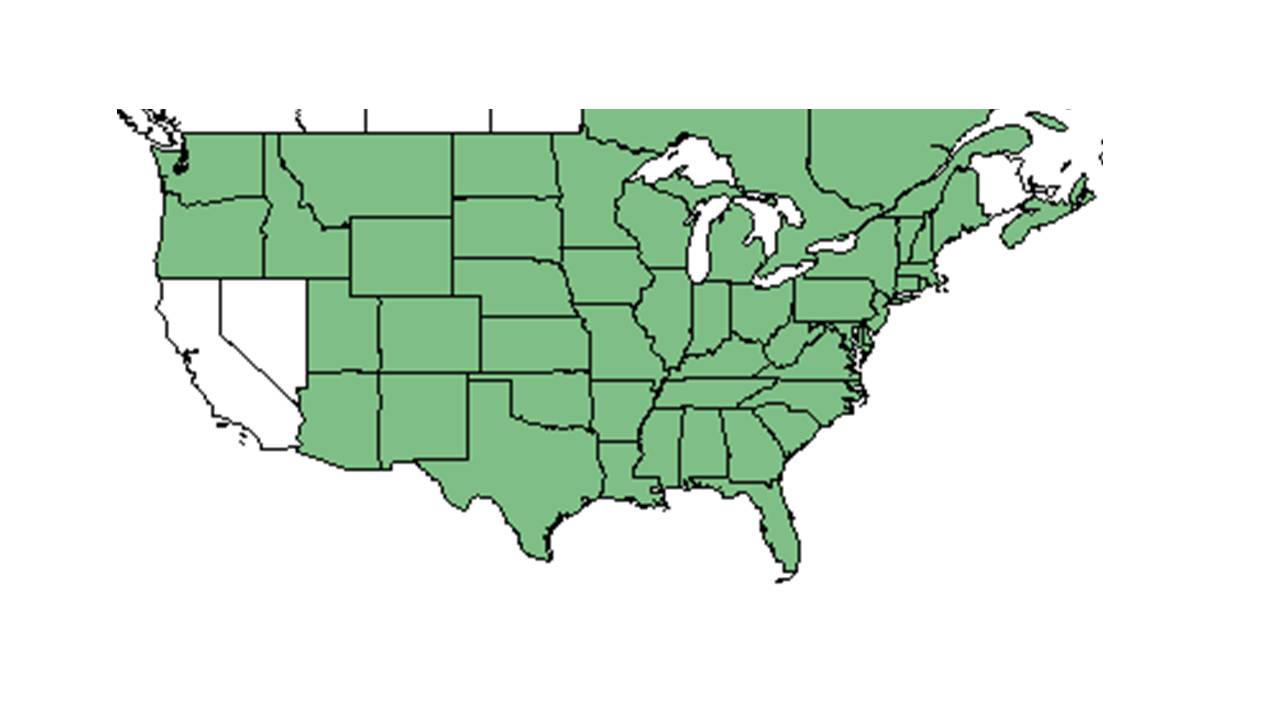Difference between revisions of "Physalis heterophylla"
(→References and notes) |
(→Conservation and Management) |
||
| Line 42: | Line 42: | ||
<!--===Diseases and parasites===--> | <!--===Diseases and parasites===--> | ||
| − | ==Conservation and | + | ==Conservation and management== |
| + | |||
==Cultivation and restoration== | ==Cultivation and restoration== | ||
==Photo Gallery== | ==Photo Gallery== | ||
Revision as of 19:35, 29 June 2016
| Physalis heterophylla | |
|---|---|

| |
| Photo by Ohio State Weed Lab, The Ohio State University, Bugwood.org | |
| Scientific classification | |
| Kingdom: | Plantae |
| Division: | Magnoliophyta - Flowering plants |
| Class: | Magnoliopsida – Dicotyledons |
| Order: | Solanales |
| Family: | Solanaceae |
| Genus: | Physalis |
| Species: | P. heterophylla |
| Binomial name | |
| Physalis heterophylla Nees | |

| |
| Natural range of Physalis heterophylla from USDA NRCS Plants Database. | |
Common name: clammy groundcherry
Contents
Taxonomic notes
Synonyms: Physalis heterophylla var. heterophylla; P. heterophylla var. ambigua (A. Gray) Rydberg; P. heterophylla var. clavipes Fernald; P. heterophylla var. nyctaginea (Dunal) Rydberg; P. ambigua (A. Gray) Britton; P. nyctaginea Dunal
Description
"Annual or perennial, glabrous or pubescent herbs. Leaves petiolate, entire to coarsely dentate, the base tapered, subcordate or oblique. Flower axillary, solitary; the calyx tube expanding, papery and bluntly conical when mature, loosely enclosing the fruit. Corolla campanulate to subrotate, yellow, often with 5 dark spots in the base of the tube; stamens 5, erect, separate, anther yellow or blue, dehiscing by lateral slits berry somewhat mealy, 2-locular, globose." [1]
"Rhizomatous, often viscid perennial 2-9 dm tall. Stem pubescence of glandular trichomes mixed with both long and short nonglandular trichomes. Leaves widely ovate or oblanceolate to triangular or lanceolate, 3-11 cm long, 3-8 cm wide, sinuate-dentate or coarsely and irregularly dentate, rarely subentire, weakly cordate. Calyx 7-12 mm long, lobes triangular to lanceolate, shorter than the tube; corolla 10-18 mm long or broad, with 5 brownish basal spots; anthers yellow or rarely bluish, 3.5-4.5 mm long. Berry ca. 10 mm in diam., the fruiting calyx 2.5-3 cm long, about as broad." [1]
Distribution
Ecology
Habitat
P. heterophylla has been documented to grow in calcareous coastal hardwood hammocks, drying sand bordering woods, upland sandhills and annually burned longleaf pineland (FSU Herbarium). It has also been observed growing in old biocontrol plots and a fallow quail food patch. It has been documented in moist sandy loam and in the loam soils of the Red Hills Region (FSU Herbarium). Associated species include longleaf pine (FSU Herbarium).
Phenology
P. heterophylla has been observed to bloom May through July (FSU Herbarium).
Seed dispersal
According to Kay Kirkman, a plant ecologist, this species disperses by being consumed by vertebrates (being assumed). [2]
Conservation and management
Cultivation and restoration
Photo Gallery
References and notes
Florida State University Robert K. Godfrey Herbarium database. URL: http://herbarium.bio.fsu.edu. Last accessed: July 2015. Collectors: Loran C. Anderson, Andre F. Clewell, R. F. Doren, R. Komarek, J. M. Kane,
Lisa Keppner. States and Counties:Florida: Calhoun, Leon, Nassau, Wakulla, Washington. Georgia: Thomas. Compiled by Tall Timbers Research Station and Land Conservancy.